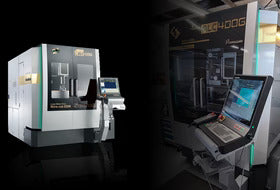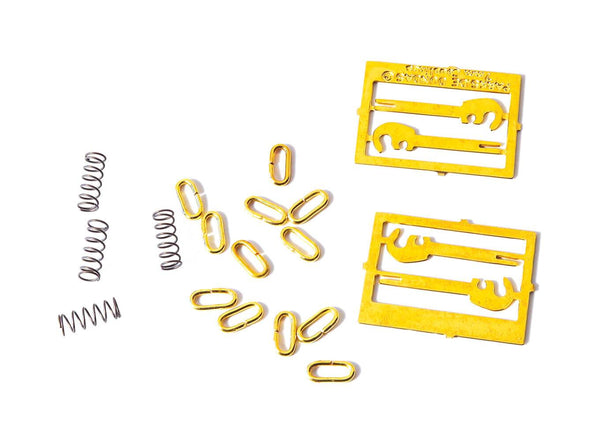BROWSE PECO PRODUCTS
Browse through our complete product portfolio.
233 Products Found
Buffers RCH End Door
Kit and Scratch builder's accessory. Pack contains sufficient parts for 4 Buffers
Buffers RCH (White Metal)
Kit and Scratch builder's accessory. Pack contains sufficient parts for 4 Buffers
Transfers (Waterslide) LNER/BR from kits PS.3-PS-04 and PS11
Kit and Scratch builder's accessory.
Buffers NBR (White Metal)
Kit and Scratch builder's accessory. Pack contains sufficient parts for 4 Buffers
GWR Mica Insulated Van
In 1929, 54 of these vans were built to carry meat in chilled conditions. The hoppers inside were filled with “Drikeld” solid carbon dioxide through characteristic roof vents. They lasted into the 1960s, some being converted into “TEVAN” vans (PS48). Transfers for GWR and BR. These finely moulded plastic wagon kits come complete with pin point axle wheels and bearings, 3 link couplings and transfers. This kit is supplied with pre-coloured moulded parts although painting can improve the appearance. Additional parts to enable the vehicle to be modelled incorporating modifications made to the prototypes during their working life are included where appropriate.
Sprung Wagon Buffers RCH style
Kit and Scratch builder's accessory. Pack contains sufficient parts for 4 Buffers
3 Link Couplings Etched hook Springs
Kit and Scratch builder's accessory. Pack contains 2 pairs of couplings. Three-link chain couplings, with no means of drawing the wagons together, were used to form the peculiarly British "loose coupled" freight train: since such trains were not fitted with an automatic through-train braking system there were no pipes to connect between the vehicles. Control of the train was assisted by the guard's van at the rear of the train, or in certain cases a series of vans spaced along the train, which kept the couplings taut and therefore also helped prevent snapped couplings. Such trains travelled at low speeds and were finally phased out in the 1970s.
GWR Tevan Goods Van
These vans were converted from Mica Insulated Vans in 1938 (see PS49). They carried tea and coffee from the Lyons depot at Greenford into the 1960s. They featured a zinc-lined body. Transfers for GWR and BR. These finely moulded plastic wagon kits come complete with pin point axle wheels and bearings, 3 link couplings and transfers. This kit is supplied with pre-coloured moulded parts although painting can improve the appearance. Additional parts to enable the vehicle to be modelled incorporating modifications made to the prototypes during their working life are included where appropriate.
GWR 20ton Loco Coal Wagon
Converted from the “Felix Pole” wagons (PS41), 200 were so treated in 1934-35, to convey coal to GWR locomotive sheds. Featuring extra side doors, they joined the general coal fleet in the 1950s. Transfers for GWR and BR. These finely moulded plastic wagon kits come complete with pin point axle wheels and bearings, 3 link couplings and transfers. This kit is supplied with pre-coloured moulded parts although painting can improve the appearance. Additional parts to enable the vehicle to be modelled incorporating modifications made to the prototypes during their working life are included where appropriate.
GWR Container Wagon
Standard GWR container (CONFLAT) wagon, as used in kit PS39, but without the container. Transfers for GWR and BR. These finely moulded plastic wagon kits come complete with pin point axle wheels and bearings, 3 link couplings and transfers. This kit is supplied with pre-coloured moulded parts although painting can improve the appearance. Additional parts to enable the vehicle to be modelled incorporating modifications made to the prototypes during their working life are included where appropriate.
GWR 20ton Goods Brake Van
221 of these vans were built between 1927 and 1931. Seen all over the GWR, and later BR Western Region. Examples lasted until the 1960s. Transfers for GWR and BR. These finely moulded plastic wagon kits come complete with pin point axle wheels and bearings, 3 link couplings and transfers. This kit is supplied with pre-coloured moulded parts although painting can improve the appearance. Additional parts to enable the vehicle to be modelled incorporating modifications made to the prototypes during their working life are included where appropriate.

























